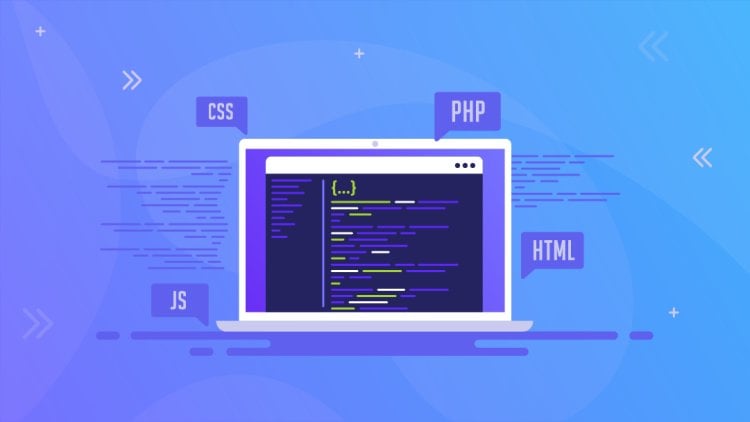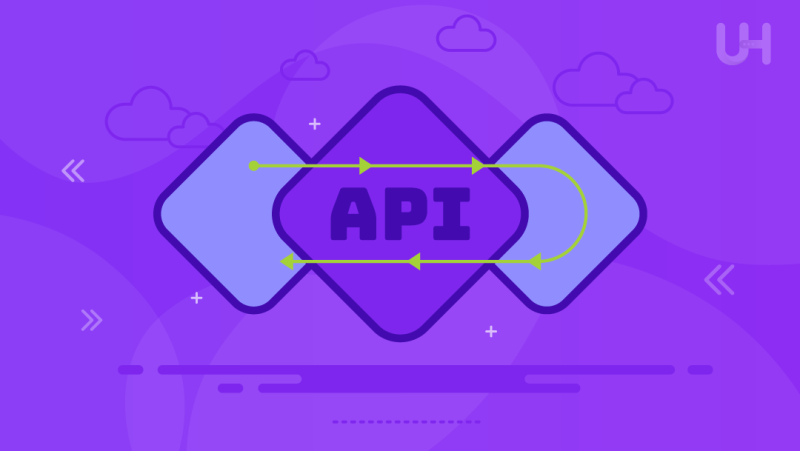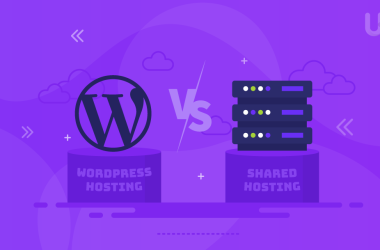Nowadays, the interconnectedness between software is essential to facilitate various activities and functions that are part of our daily routines. An Application Programming Interface (API) is a building block that allows different software products to communicate, share, and connect data and work with each other harmoniously.
In this article, we will explain APIs and everything you need to know about them, including their definitions, how they work, types of APIs, benefits, and examples in action. Let’s dive in!
What is an API?
In the software world, an application programming interface (API) is a suite of procedural tools allowing one software program to request services from another. Simply put, it is a method of communication. It represents the menu of functions, the method of access, the syntax by which an operating system (OS) or application responds, and the set of meanings behind its syntax.
Data sharing is one of the primary functions of APIs. APIs are most often implemented by making function calls using simple languages, like verbs and nouns, and the specific rules for doing this are explained in the application’s documentation. For instance, a real estate website might have one API that broadcasts available properties in a given geographic area, a second API that gets the current interest rates, and a third API that determines the mortgage payment.
How API Works?

The workings of API architecture are commonly explained through the roles of the client and server. The application making the request is the client, and the application responding to the request is the server. For instance, the real estate database serves as the server in a real estate website, and the device you are accessing it on acts as the client.
The workings of an API depend on the four main types of APIs, each serving a very different purpose in terms of their creation and functionality.
- SOAP APIs: Using the Simple Object Access Protocol, SOAP APIs involve the exchange of messages between the client and server using XML. Now a bit less common, these were primarily used in the late 90s to early 2000s.
- RPC APIs: These stand for remote procedure calls. They allow the client to invoke a function or procedure on the server, and the server sends back the output. All popular web servers work on the same procedure with RPC APIs.
- WebSocket APIs: As a form of web API development, WebSocket APIs represent a more modern approach, where messages are wrapped like JSON objects. These APIs enable two-way communication between client applications and servers, where servers can send callback messages to connected clients. This makes customization more efficient based on the client’s needs than REST APIs.
- REST APIs: They are the most prevalent, flexible, and powerful types on the web today. They work by clients sending requests to the server as data, pushing the server to initiate certain internal functions based on this data, and then sending the output data back to the client.
Elevate Your API Performance with Unmanaged VPS Hosting!
Looking to maximize the potential of your APIs? Experience the power of UltaHost’s unmanaged VPS hosting for unmatched speed, reliability, and scalability. Get complete control over your virtual private server and unleash the full potential of your API environment.
Types of API
Nowadays, most APIs are web APIs, which expose an application’s data and functionality over the internet using the HTTP protocol. The four main types of web APIs are as follows:
- Open APIs: Also called public APIs, there are no restrictions on accessing these types of APIs because they are publicly available. An Open API, as the name suggests, is open and can be used by anyone. This helps easily promote the service across the web.
- Partner APIs: A Partner API is an interface organizations offer to allow controlled access to their services within a business partnership. It provides the necessary tools that external solution providers need to conduct intensive development and testing and, when ready, allows controlled access to an organization’s services that are not freely available to all. Typically, developers will request access to a partner API via a public API developer portal and then be guided or undertake a self-service process to gain access, resulting in the self-approval and provisioning of login credentials.
- Internal APIs: Also known as private APIs, this type of web API is exposed only to internal systems. The development and use of internal systems and processes, such as private microservices and other Intranet-only uses of an organization’s data and business logic, do not typically offer an API to the public.
- Composite APIs: These are web APIs that combine multiple data and/or service APIs. They allow developers to access multiple endpoints in a single call. In the case of service APIs, they help reduce communication and the need for multiple back-and-forths between the client application and the server. Particularly beneficial in microservices architecture, these APIs streamline tasks requiring information from multiple sources.
APIs are also categorized according to the types of systems they serve.
- Local APIs: Application-specific programming interfaces that provide the OS and middleware services to the application.
Examples: Microsoft’s .NET APIs, Telephony APIs for voice applications, and database access APIs. - Web APIs: APIs that are accessed by the application using HTTP to represent resources such as HTML web pages. Any web URL or URI can be a Web API. These APIs are also called RESTful APIs. This means they don’t retain session data between requests. Every time a request is sent, it’s a self-contained request, similar to the way the Internet works.
- Remote APIs: APIs that create a new infrastructure for a specific set of remote calls. These operations are not necessarily based on Web standards.
Examples: Java Database Connectivity API and Java Remote Method Invocation API. - Program APIs: APIs that place well-defined classes and associated functions inside the application that controls the API. These APIs operate using remote procedure call (RPC) technology, including interfaces based on the Microsoft WS-series of APIs.
Benefits of API
APIs facilitate not only the design and development of new applications and services and the integration and management of existing ones but also offer numerous additional benefits to developers and organizations more broadly:
Enhanced Collaboration
With nearly 1,200 cloud applications being used by the average enterprise web hosting, it’s all too common for enterprises to have an assortment of disconnected systems. APIs make it easier to integrate systems and enable platforms and apps to talk to one another, allowing companies to automate workflows and foster better collaboration in the workplace more seamlessly. Otherwise, the connectivity gaps would create information silos and slow down productivity and hinder performance.
Accelerated Innovation
APIs provide a level of flexibility that allows companies to establish connections with new business partners and introduce new services to their existing market. This flexibility empowers companies to access new markets, drive significant returns, and accelerate digital transformation.
The companies that originate as simply an API, like Stripe with just seven lines of code, and expand their reach by integrating with leading enterprises and diversifying their offerings are those with the largest valuations.
Data Monetization
Many companies initially choose to release an API for free to help create a developer community around their brand and form partnerships with those they see as potential collaborators. In the API economy, businesses make money by selling access to valuable digital assets through APIs.
Consider AccuWeather as an example. Soon after weather data provider AccuWeather released its self-service developer portal offering various API packages, it noticed a rather interesting turn of events. Shortly after it went live, they saw many developers come into the portal and pick a package. Then, suddenly, they sold thousands of API keys, and an API community was born.
System Security
APIs act as a protective barrier between the requesting application and the service’s infrastructure, effectively mitigating risk and further securing the communication and infrastructure. API calls generally require the use of authentication credentials.
Additionally, other security measures such as HTTP headers, cookies, or query strings are well supported for further data exchange security. Services also simply use charges such as API gateways to regulate access and do further security risk assessment.
End-user Security and Privacy
APIs also play a key role in maintaining network security and are a big part of the extra layer of protection for individual users when exposed to their vital information. A good example of this is when a website asks for a user’s location and uses a location API. A user can choose to allow or deny this request to maintain their data privacy and security.
The Web, of course, is not alone in its API use. Various web browsers and mobile operating systems now include permissions structures that govern API access to a device’s applications and data, while file systems like Windows(with the best Windows VPS), Mac, and Linux enforce stricter permissions for file access driven by APIs.
Examples of APIs
Here are some popular examples of APIs that use various protocols and standards:
- Google Maps: Anything from the tech giant Google will most likely set the standard for others in the industry. So it’s the same with their mapping service. Many websites will integrate Google Maps APIs to display maps. For example, their Directions API will use HTTP requests with responses formatted in XML or JSON to provide directions between different locations.
- WeatherAPI: This enables you to access free geolocation and weather data. It also has a wide range of APIs for forecasts, sports, astronomy, geolocation, time zones, and IP lookups. Data is provided in JSON/XML through a simple RESTful API. You’ll be able to request the API directly over HTTP or HTTPS. The site also includes detailed documentation to assist developers with the API.
- Yelp API: Built on GraphQL, the API provides users with food, merchant, and review information for restaurants, including spas, activities, and more. Servers return data following all methods of the HTTP request protocol. When implementing new applications, their developers can integrate API endpoints into them. The exchange format that’s in use is JSON.
Various software products and tools use APIs to implement the functionality their customers require. From DevOps to platforms such as Microsoft SharePoint, powerful API sources include Docker, Jenkins, and GitLab. For businesses relying on SharePoint, seeking sharepoint development services from experienced providers can help seamlessly integrate APIs and enhance functionality. Open APIs integrated with social networking sites can create an extremely wide range of third-party functionalities, including news feeds, photo sharing, and many others. Modern world news API solutions have become particularly valuable for businesses looking to aggregate and filter relevant industry updates directly into their platforms.
Conclusion
APIs are essential in accelerating and simplifying the software development process. They allow developers to not only utilize third-party services to build new applications but also to add additional functionalities to existing solutions. APIs eliminate the requirement of having developers understand all the know-how of another solution and act as an abstraction layer, connecting different software systems together while hiding the complexity of the systems.
Get NVMe VPS Hosting from UltaHost to improve the performance of your APIs. With your own dedicated resources on a virtual machine, you can now provide a better user experience. Enjoy maximum adaptability and limitless bandwidth.
FAQ
Are APIs only used by developers?
The usage of APIs is not only limited to developers to build and integrate software applications; they also play a crucial role in enabling interactions between various digital services and platforms, benefiting end-users indirectly.
What security measures are in place to protect APIs and the data they exchange?
APIs implement various security measures such as authentication, encryption, rate limiting, and access control to safeguard data exchanged between systems and mitigate potential security threats.
What role do APIs play in enabling data monetization strategies?
APIs facilitate data monetization by enabling companies to expose and monetize digital assets through controlled access and subscription models, creating new revenue streams.
Are there any risks associated with implementing APIs?
Challenges include security vulnerabilities, versioning issues, dependency on external providers, and managing API usage and access control effectively.










